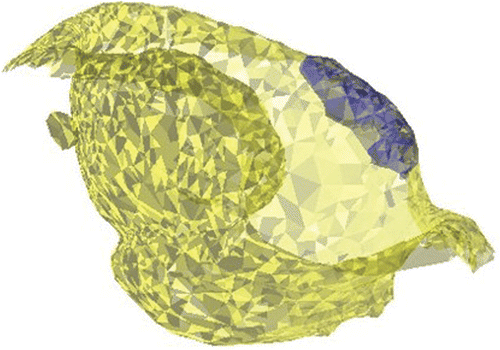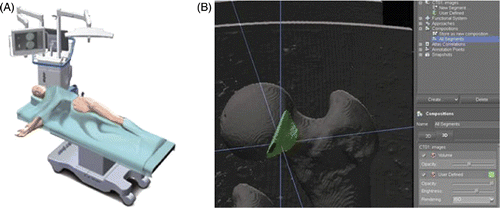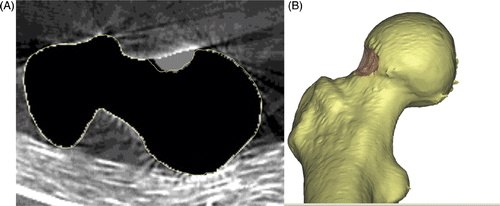Figures & data
Figure 1. (A) Craniocaudal view of femur with cam-type lesion (dark blue area) as detected by morphological analysis, and (B) suggested surgical correction to be obtained (red area).
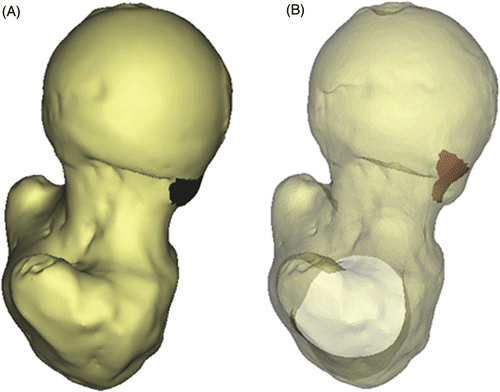
Figure 2. (A) Description of femoral and acetabular contact points in relation to the location and size of the cam lesion, and (B) identification of the intra-articular collision area and contre-coup area for evaluation of cartilage at risk for shear damage during specific motions (red areas). This particular example represents a simulation for flexion in a clinical case of FAI.
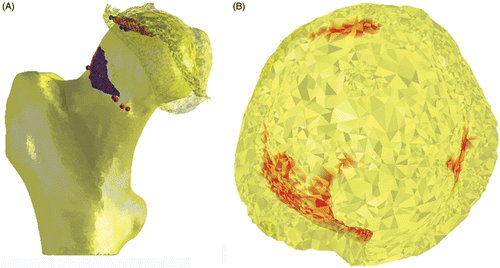
Figure 3. Structural identification of a pincer-type lesion by means of penetration evaluation of the reshaped femur in the acetabular rim during combined motions.
